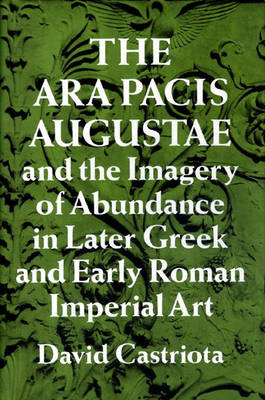David Castriota examines one of the most important monuments of early Roman Imperial art, the Ara Pacis Augustae, the sculptured marble altar built to celebrate the peace, prosperity, and stability initiated by the reign of Augustus in the later first century B.C. Castriota argues that the floral decoration of the altar enclosure was profoundly significant, operating as a visual counterpart to the technique of metonymy in language. It utilised an array of realistic plants and flowers as allusive elements associated with various gods and goddesses, which together symbolised the support and blessing of the Roman divinities for the Augustan regime. Supporting his argument with evidence from Greek and Roman literature and religion, Castriota shows that the planners of the Ara Pacis adapted and expanded a long tradition of symbolic floral decoration from Greek monumental arts. Throughout his work, Castriota demonstrates that the Roman absorption of Greek precedent enabled viewers to recognise the intended message of divine sponsorship.
By examining the origins of the Ara Pacis within its broader historical setting, the author provides new insights into a crucial period that witnessed the emergence of a distinctly Roman Imperial art.
- ISBN10 0691037159
- ISBN13 9780691037158
- Publish Date 15 June 1995
- Publish Status Out of Print
- Out of Print 26 June 2003
- Publish Country US
- Imprint Princeton University Press
- Format Hardcover
- Pages 344
- Language English
- URL https://press.princeton.edu/titles/5633.html
